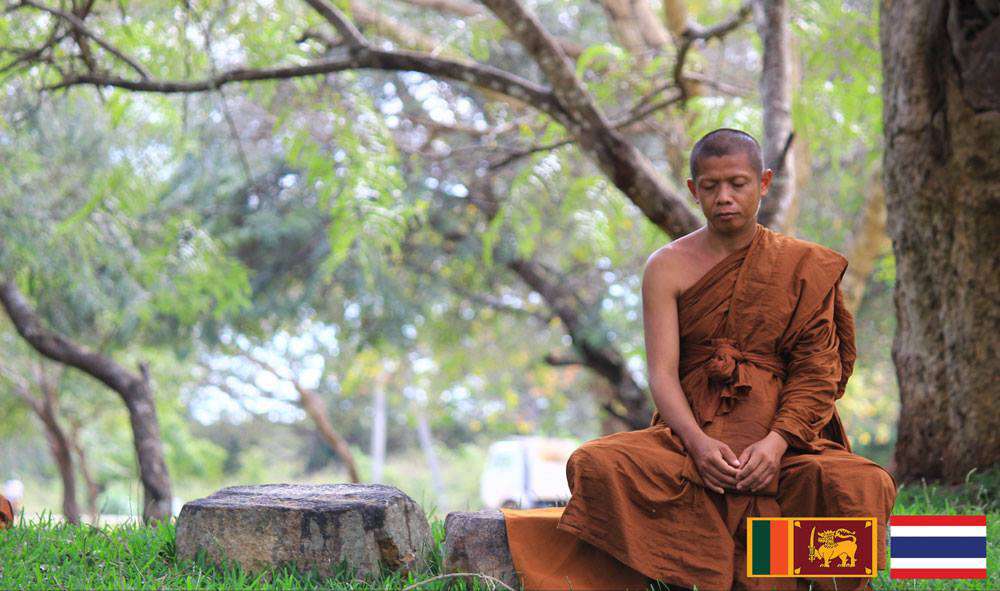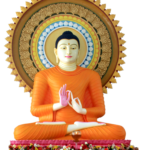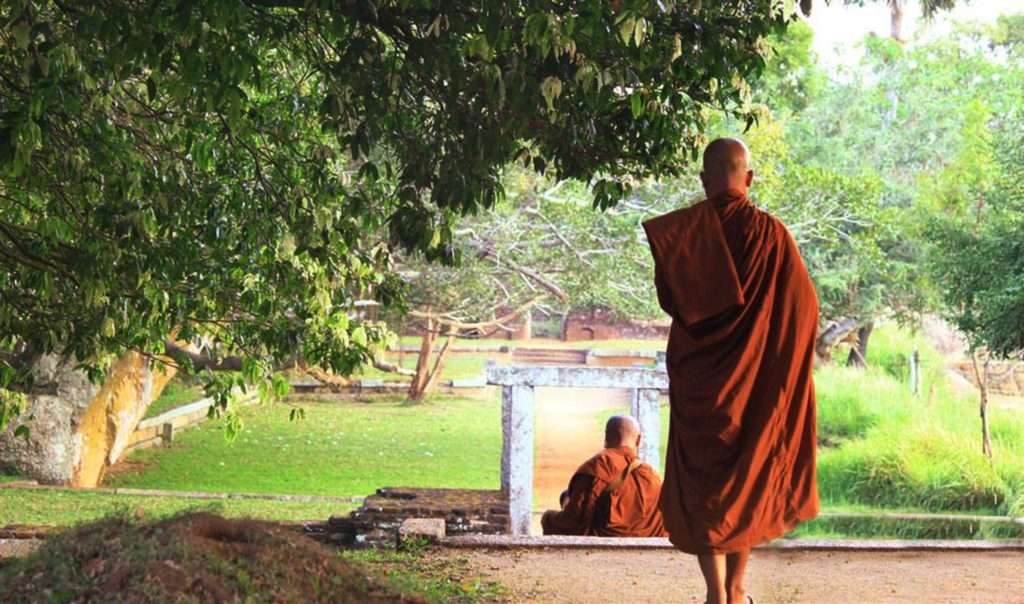Perception on Skeleton
Atṭhika saññā bhāvanā is the contemplation on the parts of a skeleton. By practicing atṭhika saññā frequently, one may advance the meditation for the cessation of defilements. One develops passion, hatred, and delusion because of the unrestrained eye, which is attracted to the details of forms seen. The eye can be disciplined by practicing atṭhika saññā, which avoids the eye attracting to details of forms.
In ancient Sri Lanka, a Buddhist monk named Tissa was travelling on foot from Mihintale, a small town, to Anuradhapura, a big city, to venerate the Sri Mahā Bodhi tree, which was a sapling of the sacred Bodhi tree of India. The monk met a woman on the way when she was running away from her husband; she smiled at the monk and walked away. Her husband who followed the woman met with the monk and enquired whether the monk had seen a woman. The monk replied saying that “I saw a skeleton; did not know whether a man or a woman”. This incident, reported in the ancient writings, illustrates disciplining the eye by practicing atṭhika saññā.
One may improve the mind to eradicate defilements by practicing insight within the concentration developed through atṭhika saññā. In order to practice atṭhika saññā, one sits in front of a skeleton or a picture of a skeleton and focuses attention on the skeleton. By carefully observing the details of the skeleton, from head to toe, one develops a mental image of the skeleton. Once the image of the skeleton is well established in the mind, he or she contemplates on the skeleton while sitting at the same place or after moving to an appropriate location.

Mediation on the Skeleton
Find a suitable place for meditation and sit comfortably. Close your eyes and reflect on the image of a skeleton. Continue reflecting on a skeleton until a clear image of the complete skeleton is visualized.
- Now, look at the skull. Instead of eyes, there are two large holes where the eyes were. Beautifully painted eyebrows are no longer there. Instead of nose there is a hole. Teeth are exposed. Beautifully painted lips are missing. Earlobes decorated with earrings are no longer there. Cheeks embellished with makeup and perfumes are missing. What remains is only the skull, which is like a dried out pumpkin. Because it is a conditioned thing, arising out of causes, this skeleton made of the four great elements is impermanent, impermanent. This skeleton is not mine, not myself, I am not.
- Collarbones are connected to sternum and ribs. Ribs are arranged like a bird-cage. Ribs resemble bamboo strips. Along the skeleton run the vertebrae resembling pearls on a string. My body too will become a skeleton. Because it is a conditioned thing, arising out of causes, this skeleton made of the four great elements is impermanent, impermanent. This skeleton is not mine, not myself, I am not.
- Vertebrae end by attaching to the pelvis. The pelvis resembles the wings of a butterfly. The pelvis supports the hips. Leg bones are connected to the pelvis. Leg bones are like dried out bamboo canes. Leg bones end by connecting to foot bones. Foot bones are hooked to toes. Because it is a conditioned thing, arising out of causes, this skeleton made of the four great elements is impermanent, impermanent. This skeleton is not mine, not myself, I am not.
- My body too will become a skeleton. On top of this skeleton, muscles are fastened, bound with blood vessels, and covered with skin. I call this structure my body and cling to it. When skin is peeled off, flesh is taken off, and vessels are pulled out, only the skeleton will remain. This skeleton helps to bear the weight of the body. It helps bending and movements of the body. The body I protect always, the body I clean and beautify always is only a skeleton. Because it is a conditioned thing, arising out of causes, this skeleton made of the four great elements is impermanent, impermanent. This skeleton is not mine, not myself, I am not.


















